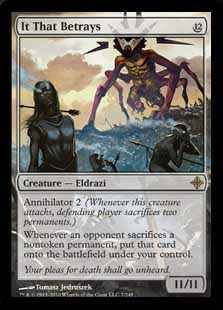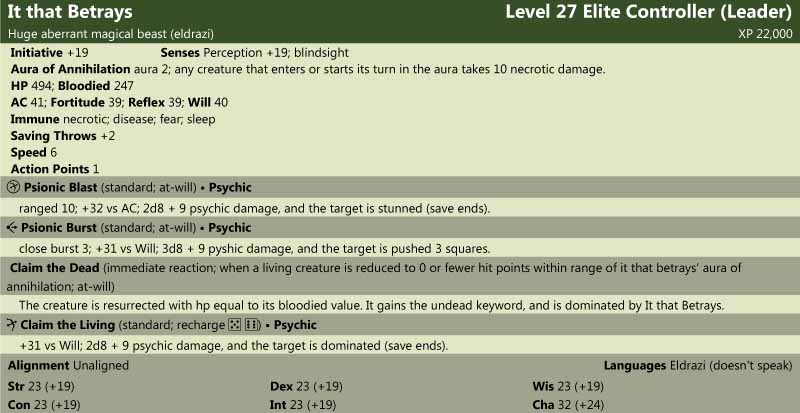Heart In the Cards
July 12th, 2010
Hello everyone, and welcome back to Dark Designs. This week I’ll be talking (albeit somewhat belatedly) about our most recent .pdf release, The Book of Beginnings, available for free at a downloads section near you.
I’m not really sure why I put off writing about this for so long. It could be because the topic I really want to talk about (and by far the most interesting, at least in my opinion) from that book was our new tarot character creation, which will always hold a special place in my heart as the first real design work I did, and, in a way, it was one of the major impetuses for starting up Necromancers of the Northwest itself.
By the time I got my hands on the original version of tarot character creation (from an article in Dragon Magazine, then using Three-Dragon-Ante), I was hungry for a new method of character creation. I had seen the downside of dice-rolling more than my fair share of times: rolling characters that were just good enough to not grant a re-roll, but still miles behind the rest of the party, forcing my character to live in the shadow of everyone else. At the same time, especially as a DM, I’d seen the downside of point-buy as well, and how it led to people always building the same style of character and not exploring other options and archetypes, as well as how it tended to encourage powergamers and munchkins and min/maxers and all that sort of ruthless phyrexian efficiency, producing characters more machine than man, if you follow what I mean.
The idea of a new character creation system intrigued me, and I pored over the Three-Dragon-Ante article greedily, trying to absorb it and determine if it could suit my needs. The answer was an emphatic “sort of.” The key principle—using the cards to randomize the distribution of point-buy points—struck me as absolutely brilliant, but the rest of the system left a little to be desired, in my opinion. For one thing, I was never the biggest fan of Three-Dragon-Ante, and was a little disappointed that their rules for adapting the method to other sets of cards were somewhat cumbersome.
Second, I didn’t care for the way they handled the last few cards (now the History cards), mostly because they weren’t tied to ability scores already, but were nebulous, and depended on when you drew it, meaning that “Death” drawn on the first card might take several points from Dexterity and put them in Strength, but if drawn on the third card would take several points from Intelligence and put them in Constitution. This might have been OK if the cards had interesting meanings (like the Nature and Spirit cards, which remained largely the same through the update), but at the time they were just “the ability score cards,” each one tied to a specific ability score.
Ultimately, however, the thing I liked the least is probably that it didn’t allow for ability scores below 8. One of the best parts of dice-rolling characters, as far as I’m concerned, is the possibility of having an exceptionally low score. With scores bottoming out at 8, the world would never have gotten Raistlin the wizard, or Minsc the ranger, to name just a couple.
So I modified the system, tweaking and altering it to my tastes. I vaguely recall a couple of feverish nights of frenzied writing as I applied specific ability score adjustments to each and every tarot card for the various different ways in which they could be drawn, doing my best to base the ability score changes off the meanings of the cards. I added rules for drawing inverted cards (I think. It’s possible that that was in the original, but I don’t think so. Unless I’m mistaken, Three-Dragon-Ante cards can’t even be upside-down, they’re the same either way), added a pool of points players can spend on their own, inflated all the points so players could start with scores at 3, rather than 8, and all the other changes to create the system you see in The Book of Beginnings.
I used the system in games I ran, and it went over surprisingly well, players especially appreciating the extra backstory information which came along with each and every statblock, and usually incorporating some or all of it into their finished character. It was pretty cool, and I was certainly happy with it (and a little proud, I’ll admit) but it never crossed my mind that anyone else might be interested in it.
Then, one day, I was on a forum somewhere on the internet, and there was a thread about “dice rolling versus point-buy,” discussing which system people preferred and why. With a minimal amount of smugness (no, really!) I popped in and gave an honest answer, saying that I had my own system using tarot, which randomly distributed point-buy points in a manner that created the same variety of character builds as dice-rolling. I promptly wandered on and forgot about the whole thing. To my surprise, however, once I returned I found that several people had expressed an interest in the system, and wanted to know if I would share it.
I quickly cleaned it up (up until then it hadn’t been intended for anyone else to read, so it still had a lot of parts that weren’t explained or were written entirely in shorthand) and provided a crude but simple version, contained entirely in an excel file. As an aside, I can’t help but wonder if any of the people who downloaded that original version also downloaded The Book of Beginnings, and were surprised to see it there. Most likely not, but I suppose I’ll never know.
Anyway, it wasn’t long after that that I was finally inspired to try and become a game designer. Wizards had an opening, and I decided to go for it. I didn’t have experience, but I had spunk. Or so I thought. They wanted someone who had published works before, and I figured hey, why not, I should put out that tarot character creation I had lying around. Some experimentation with Microsoft Publisher and Adobe Acrobat later, I had a .pdf that wasn’t so much “snazzy” as… not terrible. But somewhere along the way I started thinking that if I was going to publish this stuff, maybe I should do so on a slightly larger scale. A few phone calls later, and Necromancers of the Northwest was officially born.
We quickly determined that we wanted to open with something strong, however, and so both of our initial products (tarot character creation and a metric ton of sliver stats for D&D – you know, the M:tG ones. Yeah. Those guys. We obviously didn’t do that, probably for legal reasons. Err… enjoy the Eldrazi at the bottom of the article, will you?) were going to make the bill. Actually, the project we initially wanted to start on eventually became The Book of Souls, a book that we have yet to release (but are still working on, and, let me tell you, it’s awesome). As you know, eventually I stumbled onto the idea of Liber Vampyr, and, well, the rest is history.
And if you liked the Book of Beginnings, be sure to stop by on the 15th, when our next .pdf, an enhancement for the aforementioned product, will debut. In the meantime...you guessed it: Eldrazi.

Just to mix things up a bit we'll have the 4th edition stats first:

And now in Pathfinder:
It That Betrays (CR 20)
XP 307,200
N Gargantuan aberration (extraplanar, eldrazi)
Init +2; Senses low-light vision, darkvision, blindsight; Perception +42
Aura Aura of Annihilation
DEFENSE
AC 32, touch 8, flat-footed 28 (+2 Dex, +24 natural, –4 size)
hp 459 (34d8+306)
Fort +21, Ref +15, Will +26
Immune critical hits, disease, energy drain, massive damage, mind-affecting, negative energy, poison, sleep, stunning SR 31
OFFENSE
Speed 50 ft.
Melee 2 slams +40 (2d6+19)
Space 15 ft.; Reach 15 ft.
Special Attacks consume spawn
Spell-like Abilities (CL 20th)
Constant—blur, detect thoughts (DC 18), globe of invulnerability, lesser, see invisibility
At will—animate dead, bestow curse (DC 20), enervation (DC 20), geas, lesser (DC 20), lightning bolt (DC 19), phantasmal killer (DC 22), shadow conjuration (DC 20), telekinesis (DC 21)
3/day—chain lightning (DC 22), circle of death (DC 24), create undead, dispel magic, greater, dominate person (DC 23), hold monster (DC 21), horrid wilting (DC 24)
1/day—create greater undead, finger of death (DC 25), power word kill, wail of the banshee (DC 27)
STATISTICS
Str 48, Dex 14, Con 27, Int 2, Wis 22, Cha 22
Base Atk +25; CMB +43; CMD 55
Feats Ability Focus (circle of death), Ability Focus (dominate person), Ability Focus (finger of death), Ability Focus (phantasmal killer), Ability Focus (wail of the banshee), Toughness, Lightning Reflexes, Iron Will, Improved Vital Strike, Great Fortitude, Power Attack, Vital Strike
Skills Perception +42, Spellcraft +33
Languages Eldrazi (doesn’t speak)
SQ
SPECIAL ABILITIES
Aura of Annihilation (Su): Any living creature who moves or begins his turn within 40 feet of It That Betrays takes 4d6 negative energy damage. For each point of negative energy damage dealt this way, It That Betrays heals 1 hit point.
Aura of Enslavement (Su): Whenever a living creature within 40 feet of It That Betrays is reduced to 0 hit points, he or she must succeed on a Will save (DC 33) or rise as a zombie under the control of It That Betrays. Zombies created in this fashion have full hit points and any gear the creature wore when it died. Until the zombie is destroyed, the slain creature cannot be resurrected by any means.
ECOLOGY
Environment any
Organization solitary
Treasure incidental
Next week is Fortress Week, so be sure to check in and watch me struggle to find an article that’s relevant to the theme. Until then, may you discover the value of the things you take for granted.


